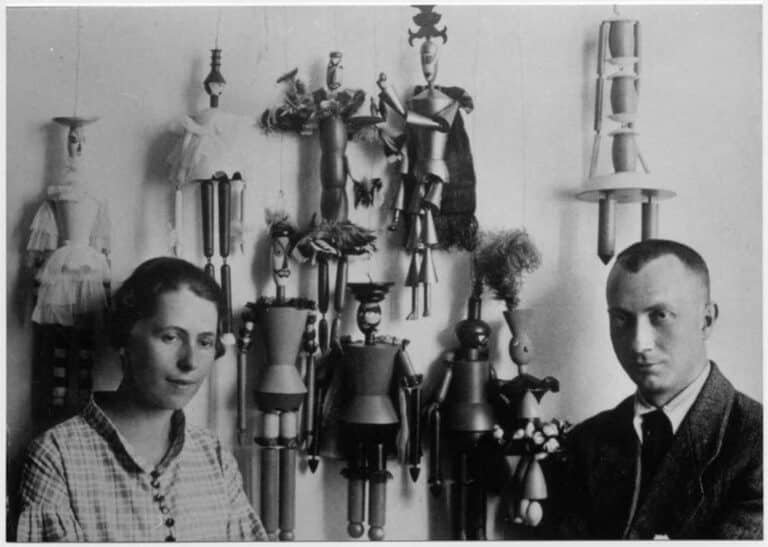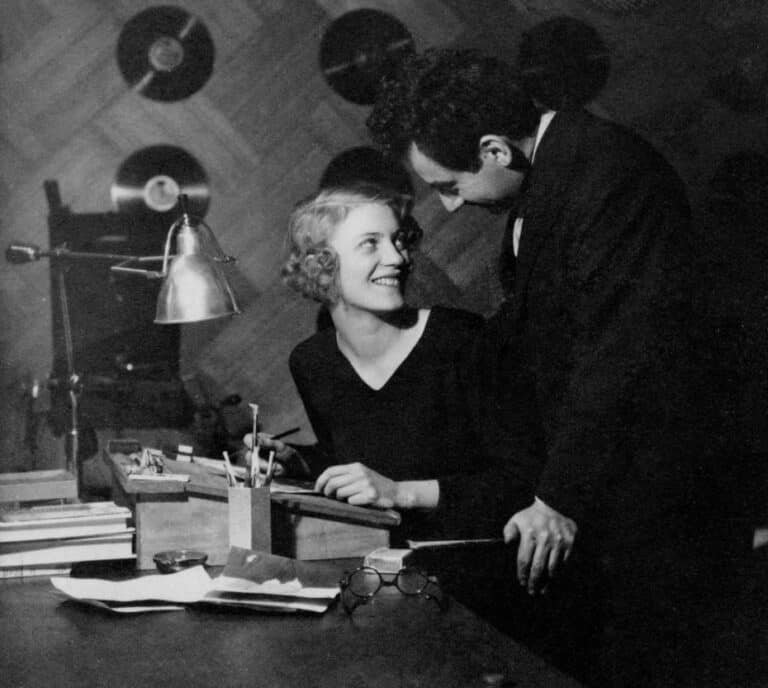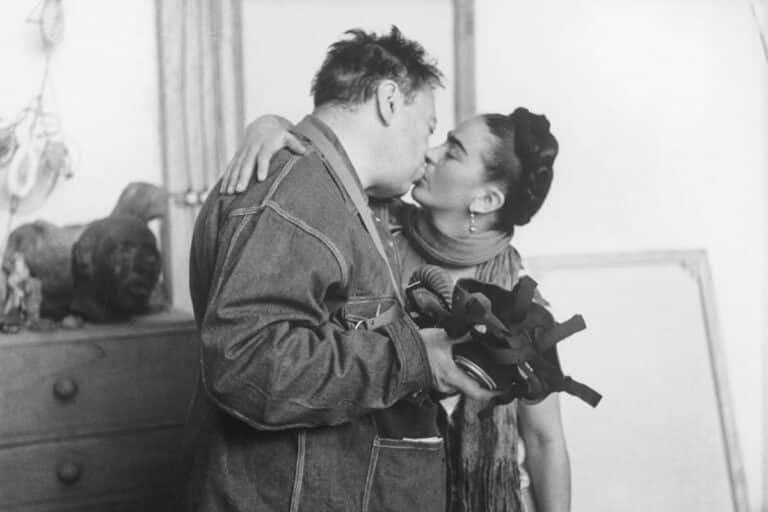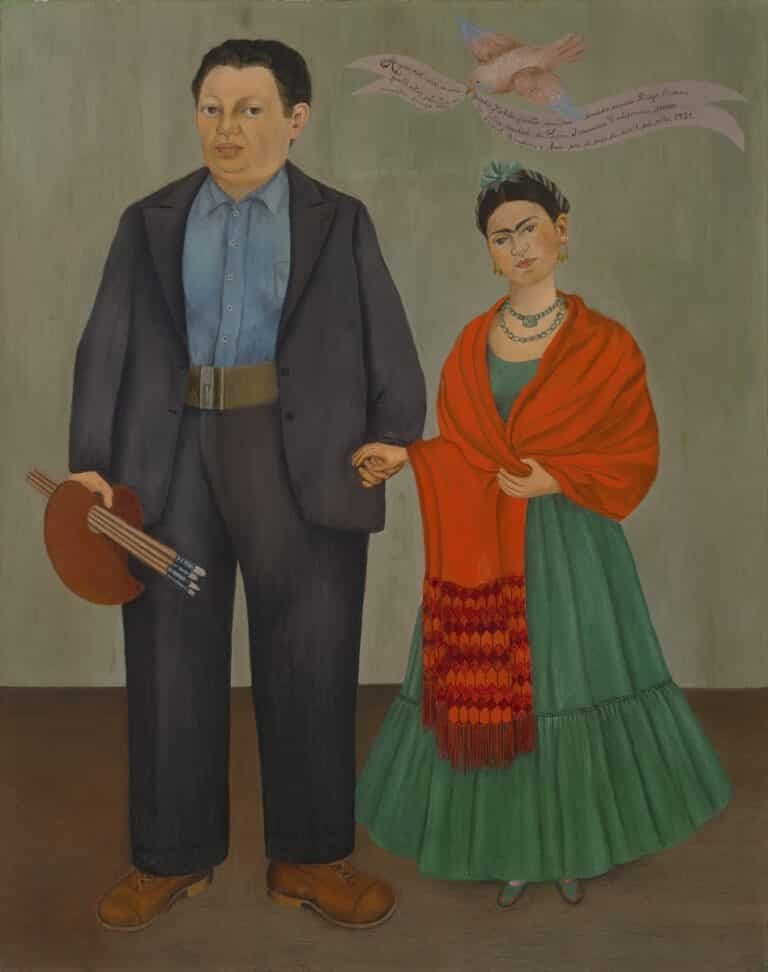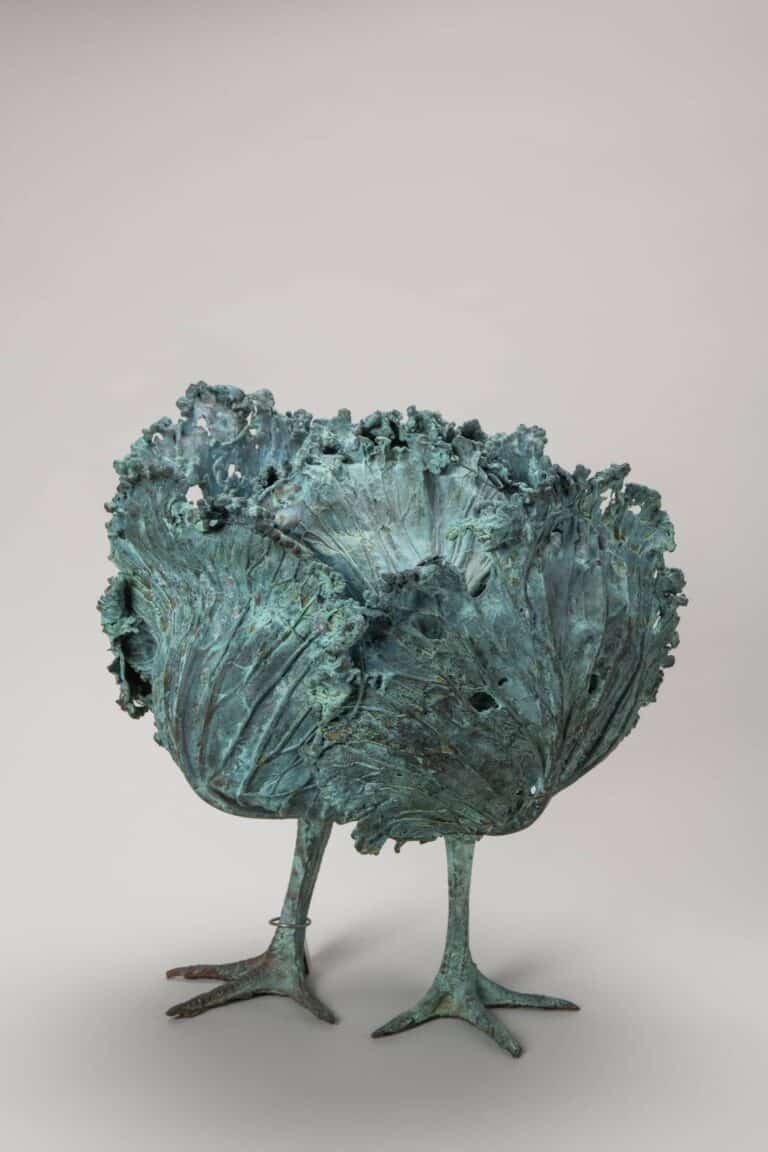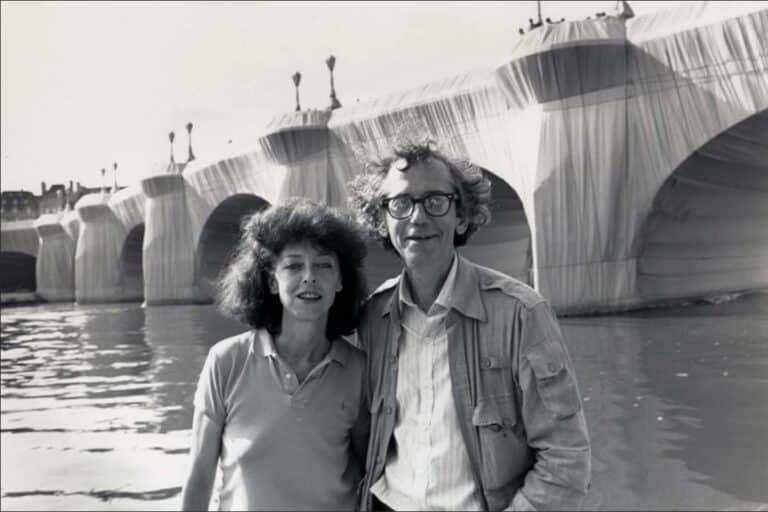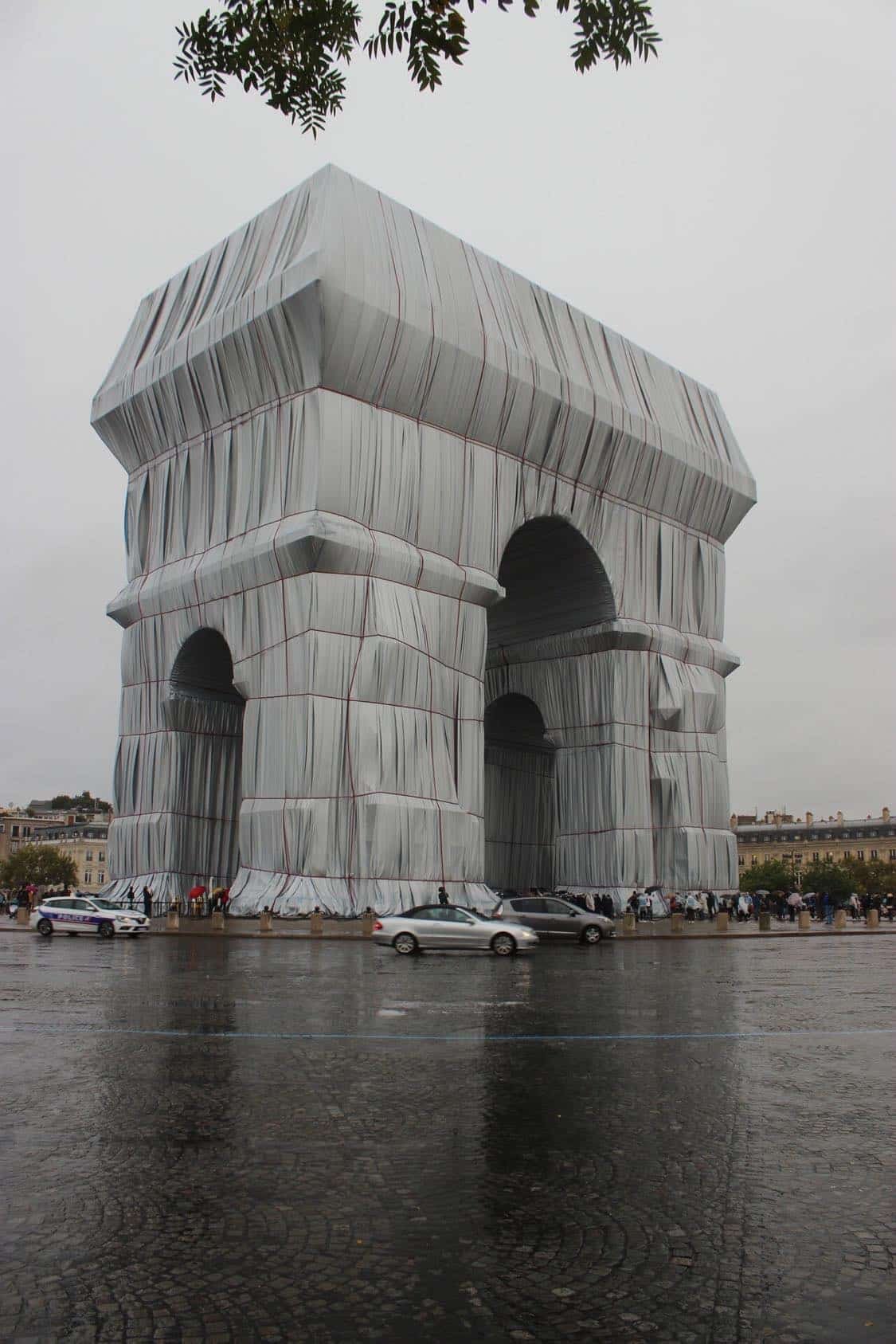Although the history of art is filled with love stories, few artist couples surpass the cliché of the artist and his muse – like Picasso and his many lovers – or that of the overbearing male artist and his long-suffering female counterpart, such as Jackson Pollock & Lee Krasner or Edward and Hopper and his wife Jo.
Let’s discover eight iconic artist couples who marked the history of 20th century art, and who are modern not only due to the times they lived in, but also in their relationship, displaying both romantic and creative exchanges.
Sonia & Robert Delaunay
Sonia Terk and Robert Delaunay met in 1908, in Wilhelm Uhde’s gallery in Paris. Originally Ukrainian but raised in Saint Petersburg, Sonia had arrived in Paris in 1906 to study painting, while Robert was beginning his artistic career. They married in 1910 and welcomed a son, named Charles, in the January of the following year. Sonia created a crib blanket for him made up from various small pieces of fabric. Its fragmented style, reminiscent of cubism, gave them the idea of adapting this style to painting.
The Delaunays were a close-knit couple who talked about art from morning till night and even painted on their bed sheets. They embarked together on in-depth research around the diffraction of light and simultaneous contrasts. In 1913, they founded simultanism, based on the constructive and dynamic powers of colour. The poet Guillaume Apollinaire, who was a friend, coined the term Orphism to define their language of colour which would eventally lead them towards abstraction.
While Robert theorised their thoughts, Sonia set out to apply the theory of simultanism to a wide range of mediums: clothing, furniture, theatre… The couple were keen to bring art into everyday life. Separated by the untimely death of Robert Delaunay in 1941, Sonia dedicated the rest of her life to promoting her husband’s work, which is often difficult to distinguish from her own.
Jean Arp & Sophie Taeuber-Arp
Jean Arp and Sophie Taeuber met for the first time in 1915 during an art show in Zürich. Sophie had just moved there after training in a number of crafts in Switzerland and Germany: weaving, painting, dance and design. As for Jean, who was originally from Strasbourg (a German city at the time), he was just starting to make a name for himself as a poet and abstract artist.
Their two personalities were extremely complementary – he was as extroverted as she was shy – and their artistic collaboration was immediate. From 1916 onwards they played an active part in Dada – a subversive artistic and literary movement that sought to break the codes of rationalist culture. The group’s performances the Cabaret Voltaire in particular enabled Sophie to dance as well as design costumes and create “Dada heads” from turned wood.
The couple married in 1922 and subsequently left for Strasbourg and obtained French citizenship before settling in their house-workshop in Clamart. They remained there until 1940 when, fleeing for the free zone, they settled in Grasse, on the French Riviera and continued to make art, albeit modest pieces. Sophie Taeuber-Arp unfortunately met a tragic end when she died in 1943 of carbon monoxide poisoning in the house of their friend Max Bill. Devastated by grief, Jean did not create any work for 3 years, then only agreed to exhibit on the condition that his wife’s works be presented alongside his own.
Lee Miller & Man Ray
Elizabeth ‘Lee’ Miller was a young art student when she was noticed by an magazine editor in 1927 and became a model for Vogue. Two years down the line, she traveled to Paris to meet surrealist photographer Emmanuel Radnitsky, known as Man Ray. The attraction was immediate, magnetic, and was the start of an intense creative collaboration.
In 1929, while in the darkroom, Lee got frightened when she felt something brush against her leg, and turned on the lights. Man Ray immediately placed the negatives into the fixing bath : the couple had just created, by accident, their first solarisations: overexposed prints with altered contours, giving a surreal appearance to the images.
Encouraged by Man Ray, Lee Miller asserted herself and developed her own talent. Their breakup in 1932 left Man Ray in a state of terrible despair. Obsessed with the image of his former lover, he created a series of paintings based on her lips. They ultimately reconciled in 1937 and stayed friends for the remainder of their lives. Lee Miller, meanwhile, enjoyed a successful career as a war reporter.
Frida Kahlo & Diego Rivera
The legendary couple formed by Diego Rivera and Frida Kahlo continues to fascinate to this day. Nicknamed the elephant and the dove by Frida Kahlo’s parents, due to their remarkable difference in build, their tumultuous relationship is well documented. Frida Kahlo discovered mural painter Diego Rivera, who was twenty years her senior, when she was only fifteen years old. They met again in 1928 through photographer Tina Modotti and Frida showed Diego her paintings. He was thoroughly impressed and encouraged her.
They were married on 21 August 1929 and formed a free couple. They shared communist values, a love of Mexico, but also and above all a devouring passion for one another. The couple experienced many torments, in particular due to Diego’s philandering and Frida’s miscarriages. Her fragile health tragically never allowed her to give birth. Divorced in 1938, they remarried in 1940 and remained together until Frida Kahlo’s death in 1954, aged only 47.
While they represented an inexhaustible source of inspiration for each other, their approach to art was very different – while Diego painted epic Mexican murals, Frida documented her intimate life in herpaintings. Although considered the greatest Mexican artist of his time, he never ceased to proclaim that the title belonged to Frida Kahlo: ““I recommend her to you, not as a husband but as an enthusiastic admirer of her work, acid and tender, hard as steel and delicate and fine as a butterfly’s wing, lovable as a beautiful smile, and as profound and cruel as the bitterness of life.”
Josef Albers & Anni Albers
Modernist pioneers Josef Albers and Annelise (Anni) Fleischmann met in 1922. They were both students at the Bauhaus – a famous school for architecture and decorative arts founded in Weimar by Walter Gropius. Anni concentrated on textile design while Josef explored stained glass, but they both shared a common passion for colour and geometric patterns.
Married in 1925, Josef and Anni Albers devoted their lives to their art, encouraging each other, ignoring fashions and trends. In 1933, fleeing Nazi Germany to travel to the United States, they took part in the Black Mountain College project, a sort of art school which served as a platform for the most avant-garde artistic practices.
Both extraordinary abstract artists in their right, as well as skilled teachers, they were constantly driven by their conviction that art was at the heart of human experience and had the power to transform everyday life through craftsmanship and industry. Although they never collaborated on any common artworks – apart for their Christmas cards – they knew how to stimulate eachother to produce an incredibly varied and abundant body of work.
Claude & François-Xavier Lalanne
L’œuvre sculpté de François-Xavier et Claude Lalanne fut tellement imbriqué que le monde artistique prit l’habitude de les nommer « Les Lalanne ». Ce couple se rencontra en 1952 dans une galerie. François-Xavier s’était formé à l’Académie Jullian, fréquentant des personnalités telles que René Magritte ou Salvador Dalí. Claude avait, quant à elle, étudié l’architecture à l’Ecole des Beaux-Arts et à l’Ecole des Arts Décoratifs de Paris.
Dès 1956, les deux artistes formèrent un duo amoureux et créatif. Tous deux très marqués par le surréalisme et le Nouveau Réalisme, ils portaient un regard décalé et émerveillé sur la nature qu’ils transcrivaient dans leurs œuvres. François-Xavier et Claude Lalanne se marièrent en 1962 et eurent en 1964 une exposition de leurs œuvres communes chez Jeanine Restany appelé « Zoophytes ». Parmi leurs œuvres emblématiques, on peut citer le Rhinocéros-secrétaire en laiton de François-Xavier Lalanne ou le Choupattes de Claude Lalanne.
Les deux artistes, qui faisaient, selon leurs propres dires, « chambre commune et atelier séparé », avaient chacun leur patte : François-Xavier influencé par le monde animal, Claude plus poétique et floral, avec des notes baroques. Quoi qu’il en soit, le couple sut créer un univers onirique et joyeux, à l’image de leur union. Créant des sculptures, mais aussi du mobilier d’intérieur et d’extérieur d’une grande inventivité, ils comptèrent parmi leurs collectionneurs la famille Rothschild, mais aussi Yves Saint Laurent et Pierre Bergé, et inspirèrent même Serge Gainsbourg pour son album L’Homme à la tête de chou.
Christo & Jeanne-Claude
Famous for their packages, Christo Vladimiroff Javacheff and Jeanne-Claude Denat de Guillebon met in 1958. Christo was from Bulgaria while Jeanne-Claude was born in Casablanca. However, an amusing synchrony caused them to be born on the same day, 13 June 1935.
Influenced by Nouveau Réalisme, a French artistic movement founded in 1960 which drew its inspiration directly from everyday objects, Christo and Jeanne-Claude created one of their first joint installations by erecting a wall made of 89 oil barrels in the Saint-Germain-des-Prés area of Paris on June 27, 1962. The piece, entitled The Iron Curtain, was of course a reference to the newly built Berlin Wall. The couple subsequently tackled more monumental projects and started ‘packaging’ sites, monuments and landscapes including the coast of Little Bay in Australia (1969) the Pont-Neuf in Paris (1985) or the Reichstag in Berlin ( 1995), making them disappear while showcasing them at the same time.
In perfect harmony, Christo designed the projects while Jeanne-Claude made them a reality. The couple was driven by a common desire to create art that was democratic, accessible to all and impossible to sell. In September 2021, after the death of both artists, the Arc de Triomphe was packaged, thereby materialising a project that the couple had had in mind since 1962.
Gilbert & George
Gilbert Prousch and George Passmore met in 1967 while studying at Saint Martin’s School of Art in London. They immediately fell in love and, right after graduating in 1969, created their first performance piece as living sculptures, called Underneath the Arches, where they sang and danced like automatons to the sound of the eponymous 1930s song playing from a record.
Gilbert and George live and work together, but declare their relationship is not a collaboration: they are two individuals, but one single artist. For fifty years, the duo, who always appear dressed in dapper clothing, have explored the complexity of human life. In their work, they evoke social subjects as well as taboos including (homo)sexuality, religion and corruption.
They express their art through performances as well as video art, books, photomontages and postcards, and aim to manifest the intensity of living in the modern world. Since the 1980s, their productions have become increasingly colourful, and nowadays they use digital technology to create large polyptychs. With a great deal of theatricality, Gilbert and George are both actors and subjects in their artworks, almost seeking to become images rather than to creating them.


